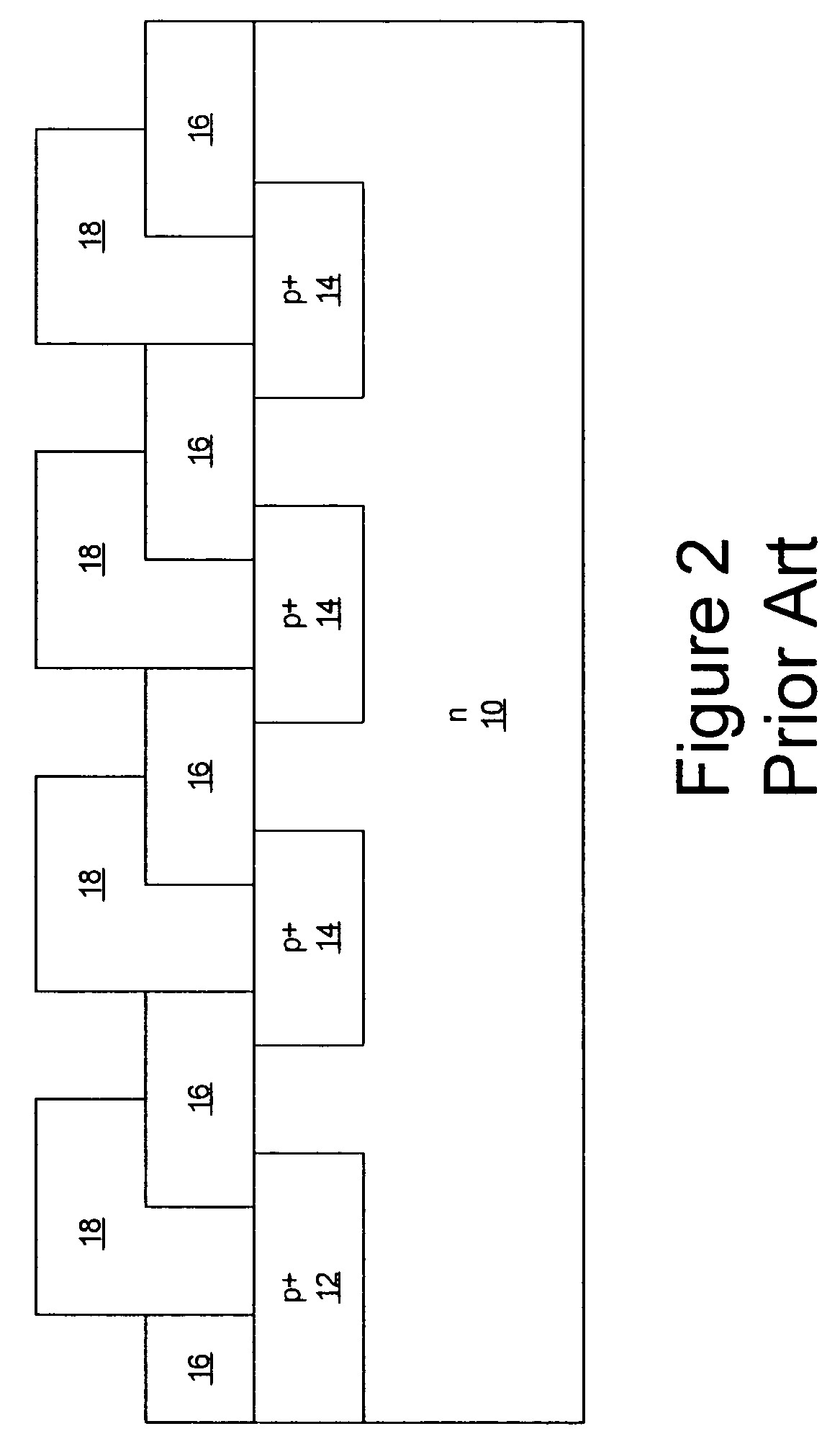Multiple floating guard ring edge termination for silicon carbide devices
a technology of silicon carbide and edge termination, which is applied in the direction of semiconductor/solid-state device manufacturing, semiconductor devices, electrical devices, etc., can solve the problems of affecting the breakdown voltage of the device, affecting the switching speed of silicon-based pin devices, and requiring additional fabrication costs
- Summary
- Abstract
- Description
- Claims
- Application Information
AI Technical Summary
Benefits of technology
Problems solved by technology
Method used
Image
Examples
examples
[0054]The following examples are illustrative of particular embodiments of the present invention and should not be construed as limiting embodiments of the present invention.
[0055]Schottky diodes with a 1.58 mm2 active area were fabricated utilizing the junction termination techniques according to embodiments of the present invention. The various junction termination configurations are described in Table 1 below. In Table 1, the devices are identifed by the number of guard rings (GR), whether a junction termination extension (JTE) was present, and if so, where the JTE was located and if the charge compensation layer (player) was present in the device. The reference to 1-zone JTE refers to a device having a single doping level JTE. The various physical and electrical characteristics of the devices are also provided in Table 1. In Table 1, BV refers to breakdown voltage and the average (AVE) and maximum (MAX) breakdown voltage for devices on one of the six wafers fabricated are provid...
PUM
| Property | Measurement | Unit |
|---|---|---|
| distance | aaaaa | aaaaa |
| distance | aaaaa | aaaaa |
| electric fields | aaaaa | aaaaa |
Abstract
Description
Claims
Application Information
 Login to View More
Login to View More - R&D
- Intellectual Property
- Life Sciences
- Materials
- Tech Scout
- Unparalleled Data Quality
- Higher Quality Content
- 60% Fewer Hallucinations
Browse by: Latest US Patents, China's latest patents, Technical Efficacy Thesaurus, Application Domain, Technology Topic, Popular Technical Reports.
© 2025 PatSnap. All rights reserved.Legal|Privacy policy|Modern Slavery Act Transparency Statement|Sitemap|About US| Contact US: help@patsnap.com



